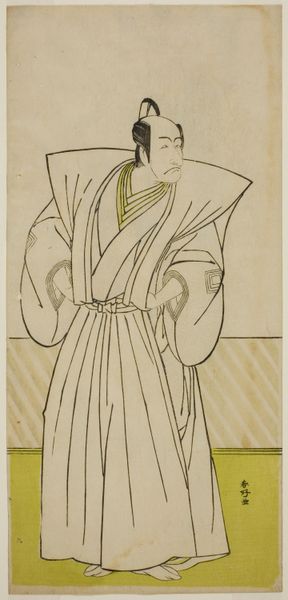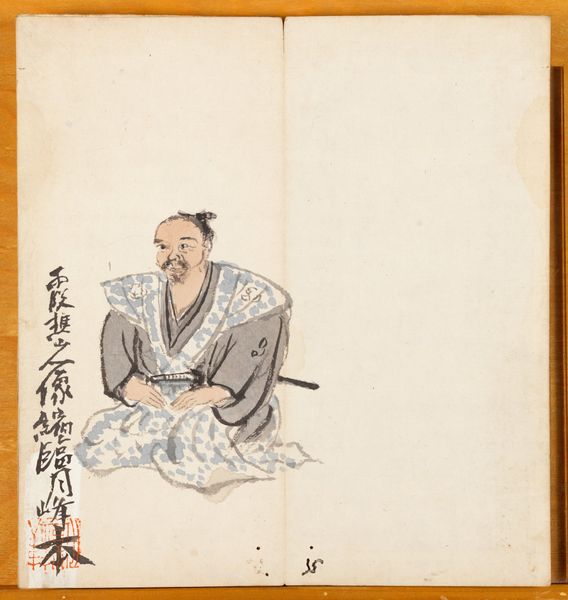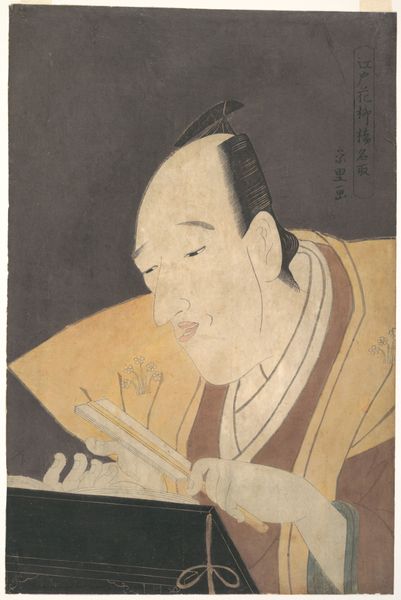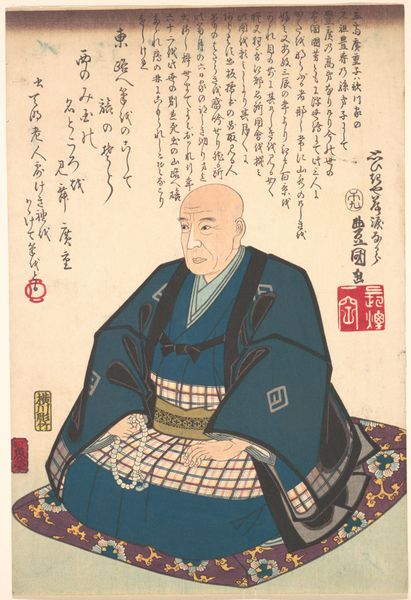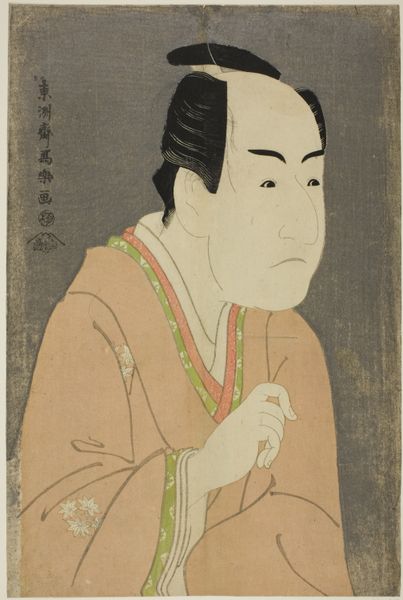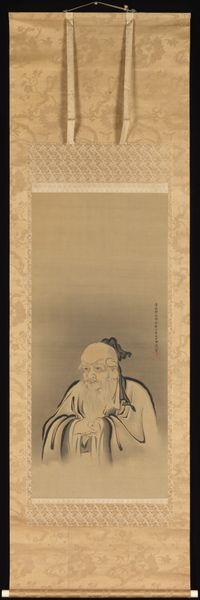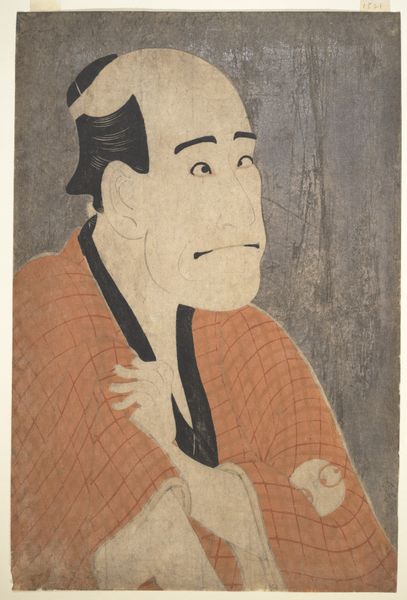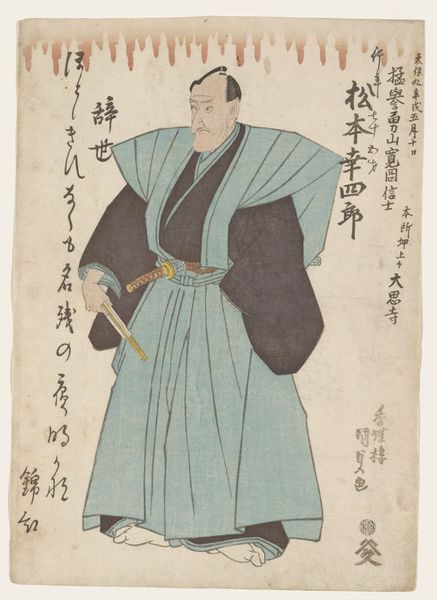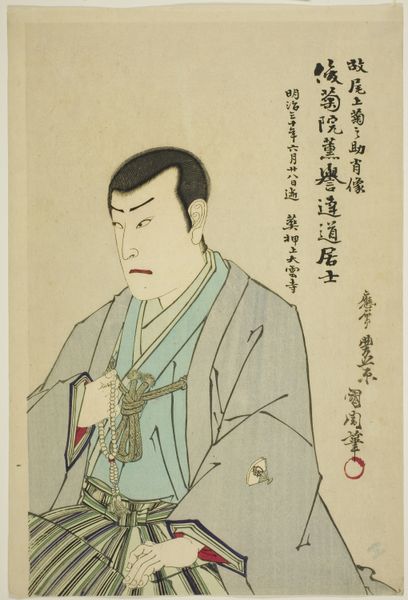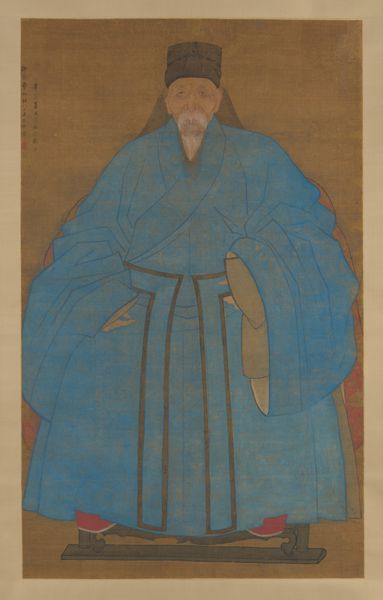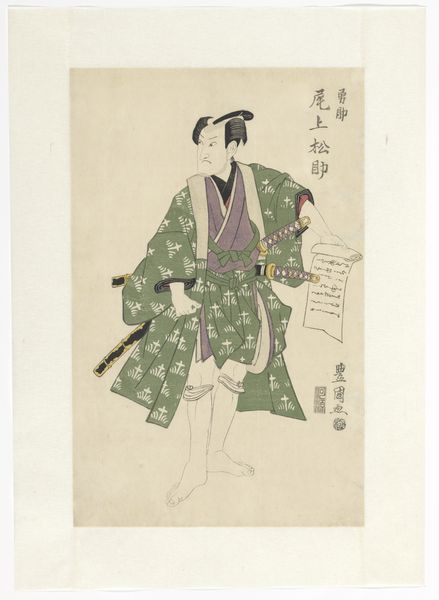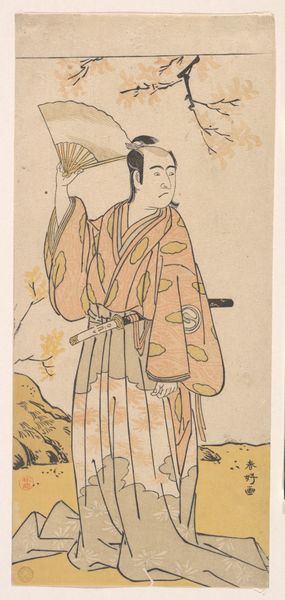
Sketch for the Portrait of Tachihara Suiken 1800 - 1841
0:00
0:00
painting, paper, ink
#
portrait
#
painting
#
asian-art
#
ukiyo-e
#
paper
#
ink
Dimensions: 29 1/8 x 17 in. (74 x 43.2 cm)
Copyright: Public Domain
Watanabe Kazan made this sketch for the portrait of Tachihara Suiken with ink and color on paper in Japan. Kazan, born a samurai, was an artist-intellectual who served the feudal government. However, he criticized the government's closed-door policy, advocating instead for engagement with Western knowledge. In this cultural context, portraiture wasn't just about appearances. It reflected one's social standing and moral character. Kazan's detailed rendering of Suiken’s features goes beyond mere physical likeness. The soft lines suggest the sitter’s wisdom and cultivated nature, which are values esteemed in Confucianism, a philosophy central to the samurai class. Kazan’s decision to focus on the inner qualities of his sitter, his embrace of Western ideas, and his later persecution by the shogunate, reveal a tension between tradition and reform in 19th-century Japan. Examining Kazan’s biography, the political history of the late Edo period, and the conventions of Japanese portraiture enriches our understanding of this work.
Comments
No comments
Be the first to comment and join the conversation on the ultimate creative platform.
